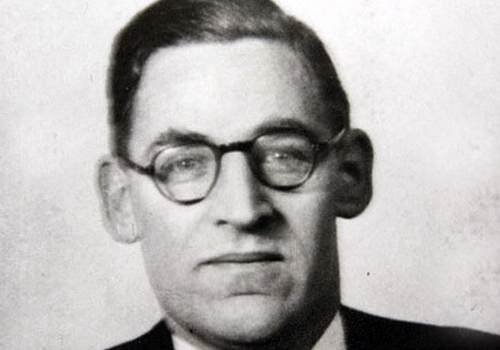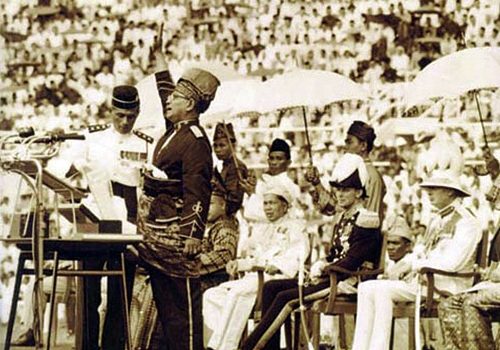Revealed: how spies trailed Sir Neil Lawson suspected of Communist sympathies

Top lawyer shadowed as he walked on Heath and met his ‘mistress’, but spooks concluded ‘he has not the stuff of martyrs’

Published: September 1, 2011
by RICHARD OSLEY
AN EMINENT barrister who became a High Court judge and whose distinguished legal career led him to be knighted by the Queen was once covertly tracked by spies who suspected him of being a communist organiser, secret service files have revealed for the first time.
Sir Neil Lawson was unwittingly followed through the streets of Hampstead and had his telephone calls tapped at a telephone exchange in Swiss Cottage during the 1950s.
But, instead of finding evidence of revolutionary plots, spies were left with little more to do than note down where he had dinner, details of when and where he walked his dachshund and speculation on whether he was having an extra-marital affair or not.
Details of the surveillance have been revealed in documents released by the Public Records Office and read by the New Journal.
They show how Sir Neil, long before he was knighted, sparked worries among secret service figures when he began providing constitutional legal advice to the rulers of Malaya during its move to independence from British control in 1957.
Identified as a lawyer who had sympathy with the Communist Party – something that instantly generated alarm among government chiefs at the time – the British secret service fretted over whether the rulers of Malaya should be told of the “adverse security information” they had connected to Mr Lawson.
It was felt that if his possible links to far-left politics were exposed, it would “greatly discredit” the new regime in the country now known as Malaysia.
The order went out to security personnel that Mr Lawson, who lived in Heath Drive, Hampstead, had to be watched to see how deep his involvement with Communist Party members was. Some of the suspicion was rooted in a past role in defending a party member accused of burning down the Reichstag, the German parliamentary building, which had become a symbol of Nazi rule, in the 1930s. He had also defended the left-wing Daily Worker newspaper in a contempt of court case.
A confidential MI5 memo printed in 1957 read: “It is known from top secret and delicate sources that after the war he [Lawson] renewed his contact with the Communist Party and that he has continued to contribute sums of money liberally to party funds. These contributions were not affected by either the anti-Stalin revelations last year or by the events in Hungary, a subject on which he entirely accepts the Communist Party line.” The reference to Hungary relates to the people’s revolt against Soviet policies in 1956.
Government sources were suspicious of how Mr Lawson had secured such a key role in the negotiations in Malaya. Their investigations found that, rather than being part of a grand masterplan to spread communism around the world, he had simply known one of the country’s rulers during his university days.
The files, all marked with a “top secret” stamp, reveal that, as the spying intensified, colonial department officials were confused as to why he was being pursued at all and called for his “security status” to be reassessed.
One private despatch from Asia said he had been an “asset” in the negotiations. Another added: “If you consider him to be a true communist, he is certainly the most consummate dissembler we have ever encountered.”
The chase continued nonetheless.
Spooks monitored where he had his haircut, quick lunchtime drinks in pubs and his walks across the Heath.
Unnamed figures in London’s legal fraternity provided extra information and the files mention suspicions from one secret source that other well-known lawyers might also be working with communists, including Geoffrey Bing, who went on to become a Labour MP, and Dingle Foot, brother of former Labour Party leader Michael Foot.
Both were suggested to be “secret helpers”, although the files released by the National Archives suggest investigations there also came to nothing.
Still, the less evidence of treachery the spies could find, the bigger the worry that Mr Lawson, regarded by colleagues as “one of the ablest and most astute lawyers at the bar” could simply be brilliantly adept at hiding mischievous work.
Another previously classified file reads: “Source considers that if Lawson was playing a deep game, he could be a very dangerous man indeed.”
Visits to his chambers by Communist Party member Isobel Brown, who lived in Hampstead, and social engagements with other left-wingers heightened their fears, even though these concerns were not matched by the glowing praise British officials in Malaya afforded Mr Lawson.
The documents show that for several days in a row in September 1957 his every move was tracked. The thick file includes typed-up bland accounts of his movements, such as: “After purchasing sweets he waited outside Hampstead tube station where at 6.55pm he was joined by a woman whom we presumed to be his wife. Both entered the Everyman cinema.”
The surveillance reports also log several after-work visits to a French woman in Ivor Place, near Baker Street.
Justifying the spying, a secret service report later said: “It enabled us to learn something of his private life, about which we had previously been rather ill-informed, for example we learnt the identity and address of his mistress.”
But hard as they looked, no conspiracy was uncovered. By 1958, MI5 had come around to the idea that he might be able to work as a lawyer without his every move being influenced by his supposed politics.
As surveillance was brought to a halt, a secret service assessment file concluded: “Everything on file indicates that Lawson is at least a convinced Communist sympathiser. It is almost impossible that, a subscriber to Party funds, he could not be a sympathiser and a very strong one at that.
“On the other hand it would not seem that his convictions rule him to the extent that he would jeopardise his successful and highly profitable career on behalf of the Communist Party. An astute barrister earning several thousand pounds a year has not, I suggest, the stuff of martyrs in him. Lawson is now a man of means and some maturity. It is unlikely that at this stage of his life he would begin to allow his heart to rule his head.”
Sir Neil, who died in January 1996, aged 88, became one of the country’s most respected silks.
A member of a talented family, his sister Joan was an expert in dance and wrote books on ballet. His daughter Annabel was one of the founders of the renowned Arnolfini arts centre in Bristol in the 1960s.
Sir Neil himself worked well beyond the normal retirement age after being made a High Court judge in 1971 following six years as a Law Commissioner.



